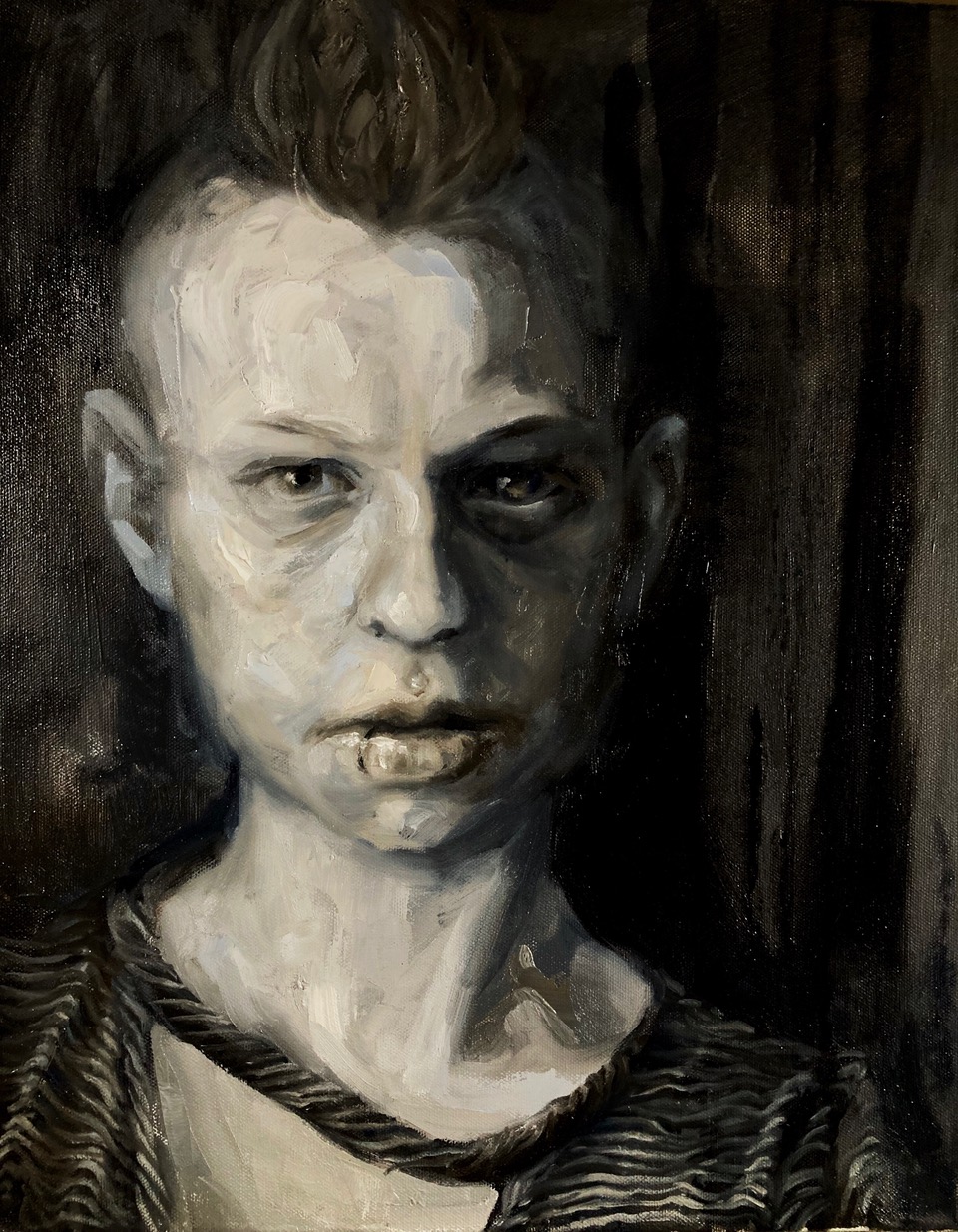In this course we will be deconstructing the portrait by breaking down the planes of the face into shapes that we will can visually understand using the “selfie” by focusing on tonal painting (greyscale). By removing color, we are able to hone in on subtle variations in value (light and dark) that we can emphasize by changing of temperature of neutrals — resulting in “colorful” greys. This is the 1st lesson in my Demystifying The Portrait lesson series because this exercise in monochrome painting is great for beginner and advanced portrait painters alike because it trains you to see shapes and values instead of just “a face” and strengthens observational skills. Painting is all about light, so the monochrome (grey-scale) portrait is the most essential foundation to mastering representational portrait painting.
Monochromatic painting is a tool that figurative arts have used over the course of art history to act as a base for their paintings — called “underpaintings” that color can be added to in glazes to achieve hyperrealistic affects of skin. However, a greyscale painting in our modern era of saturated colors is a stands as a statement of its own, and possesses an almost timeless quality.
When you have mastered painting tonally, color comes much easier and color can be pushed to unnatural extremes while still functioning within a perceived reality, which I can explore further in future lessons. Become a Patron and have access to my entire lesson library as it grows.
This lesson will walk you through the beginning to end of a portrait, walking you through my process and decisions I made over the course of the painting. The goal of this lesson is that by the end you will have everything you need to tackle a greyscale alla prima (wet into wet) portrait. Although we will just be using neutrals, we will still be exploring color theory to a basic extent and will not be using black. Instead, we will be using just three colors: titanium white; ultramarine blue and burnt umber to mix black and all our grays. By doing this we will be able to push temperature shifts in a way that is simplified and will benefit you greatly when using a limited or full palette.
Recommended supplies for the course:
- oil paint: titanium white, ultramarine blue, burnt umber
- canvas panel 16″ x 20″ recommended
- hog or synthetic brushes, a few different sizes: filberts/flats suggested sizes 2, 4, 6, 8, 12
- oderless mineral spirits (solvent)
- some type of painting oil: linseed, poppy, safflower, walnut, etc
- at least 2 palette knives different sizes

